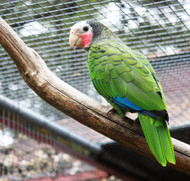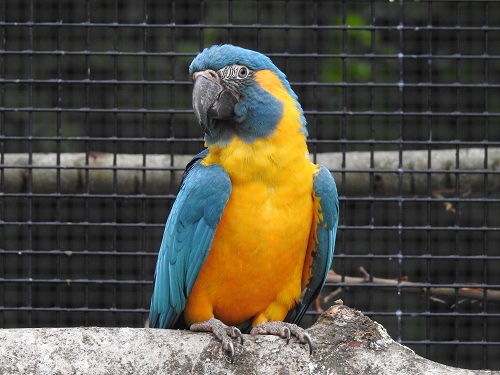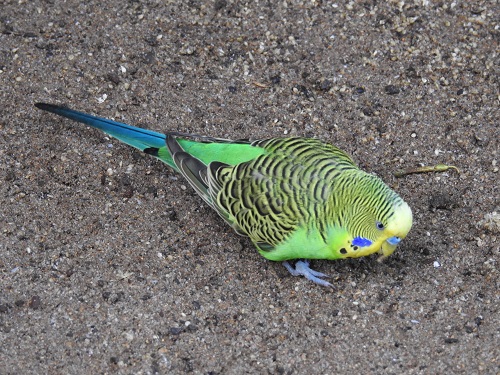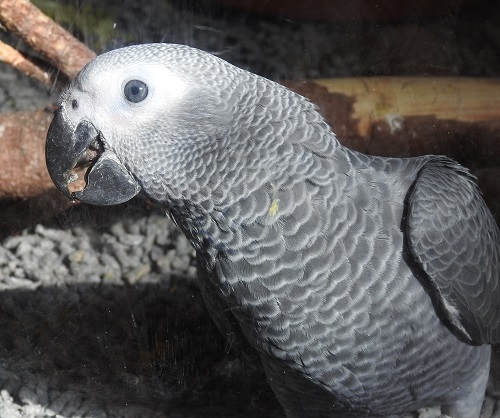Parrots on CITES Appendix I
Posted by Conservation, Wild Parrots on 11/7/2025
Beginners to bird-keeping will read about CITES but might not understand what it means or how it can affect them. CITES (this acronym is pronounced sight-ees) stands for the Convention on International Trade in Endangered Species and was designed to prevent species of fauna and flora and their products (including feathers) from becoming endangered by excessive trade.
The treaty was initiated in 1973 when it was signed by 21 nations. By 1990 nearly one hundred nations participated and today the total is approximately 185. Representatives from member nations can attend meetings of the Scientific Review Group and propose the addition (or even the deletion or down-listing) of various species. The Conference of the Parties is the decision-making body of the Convention and comprises all its member States.
In June 1981 all members of the Parrot family, except those listed in Appendices I and III, were placed on Appendix II. This was the first time that an entire group of birds, rather than a named species, had been listed.
To check which bird species are listed on Appendix I and on Appendix II go to https://cites.org/eng/app/appendices.php
Breeders of all types of non-domesticated birds need to know if the birds they rear are listed under Appendix I.
APPENDIX I
Species threatened with extinction in which trade in wild-caught birds would have a serious effect. Fifty-four endangered Parrot species were listed on Appendix I as at February 2025.In the EU species on this Appendix are listed on Annex A.
APPENDIX II
In the EU these species are listed under Annex B. These are the species that could be threatened with extinction if trade was not regulated effectively. Trade is permitted if it is sustainable and the specimens were obtained legally.
In June 1981 all members of the Parrot family, except those listed in Appendices I and III, were placed on Appendix II. It reflected the fact that by 1981 the trade in wild-caught Parrots had become immense and for many species was not sustainable. Species are not listed on Appendix II because they are endangered but because it allows (in theory) close monitoring of trade to prevent them becoming endangered. (In fact a number of CITES II-listed Parrots were not properly monitored and are now endangered and on Appendix I.)
Note that the Treaty stipulates that trade is permitted in a species if it is sustainable. In the year 2000, for example, 89 Parrot species were legally trapped and exported even though it was unknown whether trade was sustainable. Even more were traded illegally.
A loose definition of sustainable might be that the size of the population is maintained by breeding, despite trapping. However, when CITES commenced, research projects on Parrots in the wild, with the exception of several highly endangered species, were almost non-existent so there was no way to ascertain whether trade in most Parrot species was sustainable.
We now know that in very many cases, it was not. Since that year some Appendix II species have been moved to Appendix I, such as (belatedly) the Critically Endangered
?Lesser Sulphur-crested Cockatoo, the nominate race of which is close to extinction in some areas. From the island ofMasakambing Cacatua sulphurea abbotti chicks were taken and sold. Population: 10 birds in 2008, 8 in 2009 and 22 in 2018.
Some Appendix II species, such as the beautiful Sun Conure, have also been trapped almost to extinction. Note that these appendices automatically apply to all EU states.
The Blue-throated Macaw is on Appendix I (Critically Endangered).
As of February 2025 there were 54 Parrot species on Appendix I. Some of these are unknown or virtually unknown in captivity. The following are known to aviculturists:
Cockatoos: Goffin?s, Red-vented (Philippine), Moluccan, Lesser Sulphur-crested and Palm.
Amazons: Yellow-naped, Double Yellow-headed, Red-tailed, Finsch?s, Cuban, Red-spectacled, Red-browed, Tucuman, Vinaceous and Green-cheeked.
Macaws: Hyacinth, Great Green (Buffon?s), Blue-throated, Scarlet, Red-fronted, Blue-headed and Illiger?s (Blue-winged).
Other Parrots: Golden (Queen of Bavaria?s) Conure, Blue-throated Conure, Golden-shouldered Parakeet, Hooded Parakeet, Grey and Timneh Parrots.
The Cuban Amazon is on Appendix I.
Parrots on Appendix II
All other species except the four mentioned below. Species are listed on Appendix II not because they are endangered but because in theory it allows close monitoring of trade to prevent them becoming endangered.
Appendix III
This Appendix contains species that are protected in at least one country, which has asked other CITES Parties for assistance in controlling the trade. It is a mechanism for countries to seek international cooperation in regulating trade of species they are already protecting domestically. No Parrots are listed.
Not CITES listed
The only Parrot species not listed under CITES are the Budgerigar, Cockatiel, Ringneck Parakeet and Peach-faced Lovebird. These species are common in the wild, although the Lovebird is believed to be declining in numbers and very numerous in captivity.
The Budgerigar is not listed on CITES.
Ringing and micro-chipping
It is important to know whether any species you keep is on Annex A because if in the UK you wish to offer an Annex A species or its offspring for sale, you must first apply to Defra?s Animal Health Department. This is the UK?s CITES management authority.
Note that you do not have to apply if you are only keeping the species and not offering it for sale. (This is not the case with birds of prey where you need to register to keep them and pay a fee.)
If the bird or parents have not been registered, some evidence of history or previous ownership will be requested but if this is impossible to obtain (as sometimes happens) the registration will probably be permitted.
Note that all import, export, re-export and introduction of species covered by the Convention has to be authorized through a licensing system. Each Party to the Convention must designate one or more Management Authorities in charge of administering that licensing system and oneor more Scientific Authorities to advise them on the effects of trade on the status of the species.
Endangered by excessive trade, which CITES failed to control, the Grey Parrot is on Appendix I.
A 2010 CITES bulletin mentioned a reason why owners of Annex A listed species need to inspect rings at intervals. Article 10 certificates are needed to offer these species for sale. They are valid only if the bird is appropriately marked. In the case of closed ringed birds the ring number must be legible.
In aluminium and steel rings the unique number might become worn away, especially by some Parrots that frequently nibble at their rings. Also, when applying for an Article 10 certificate it could be difficult to prove legal acquisition and origin if the ring number is illegible and the bird is not micro-chipped. To apply:
https://www.gov.uk/guidance/apply-for-a-cites-permit
If a ring number is starting to wear away, it is advisable to take the bird to a vet who has experience of micro-chipping birds and have the bird micro-chipped. Request the vet to write a letter confirming the ring number and adding the new microchip number.
The letter should then be sent to the Wildlife Licensing and Registration Service (Animal Health Zone 1/17 Temple Quay House, 2 The Square, Temple Quay, Bristol BS1 6EB, telephone 0117 372 8774).A new Article 10 certificate should then be obtained.
It should be pointed out that if someone else has already registered the same ring number, the bird will need to be microchipped. The Animal Health division suggest that an attempt is made to make your ring numbers unique by perhaps including your postcode. Most people use two initials, a year and a unique sequenced number. However, if another breeder has the same initials, your ring number might not be unique so another possibility is to use three or four initials.





